Abstract
1. Infusions of adrenaline in physiological amounts alter human muscle contractions evoked by nerve stimulation.
2. Adrenaline shortens the duration of the slow calf muscle twitch, but has no effect on the fast twitch of adductor pollicis.
3. Adrenaline decreases unfused tetanic tension and increases the oscillation of tension in 10/sec tetani of calf muscle and adductor pollicis. The usual rise of tension and decrease in oscillation in unfused tetani (`ramp' phenomenon) is abolished.
4. Adrenaline has no effect on maximal tetanic tension or maximal rate of rise of tension in a fused tetanus of adductor pollicis.
5. The effects of adrenaline on human muscle are due to stimulation of β-adrenotropic receptors, for they are abolished by the β-adrenotropic antagonist DL-propranolol (but not by D-propranolol), and are mimicked by isoprenaline but not by noradrenaline.
6. The effect of adrenaline on adductor pollicis is abolished by local β-blockade of one arm with intra-arterial DL-propranolol, indicating that the responsible β-receptors lie peripherally.
7. The changes in muscle contraction observed cannot be explained by altered muscle temperature, for this falls during adrenaline infusion; nor are they due to an action on neuromuscular transmission, for these small doses of adrenaline do not affect the muscle action potential. The evidence points to a direct action of adrenaline on muscle.
Full text
PDF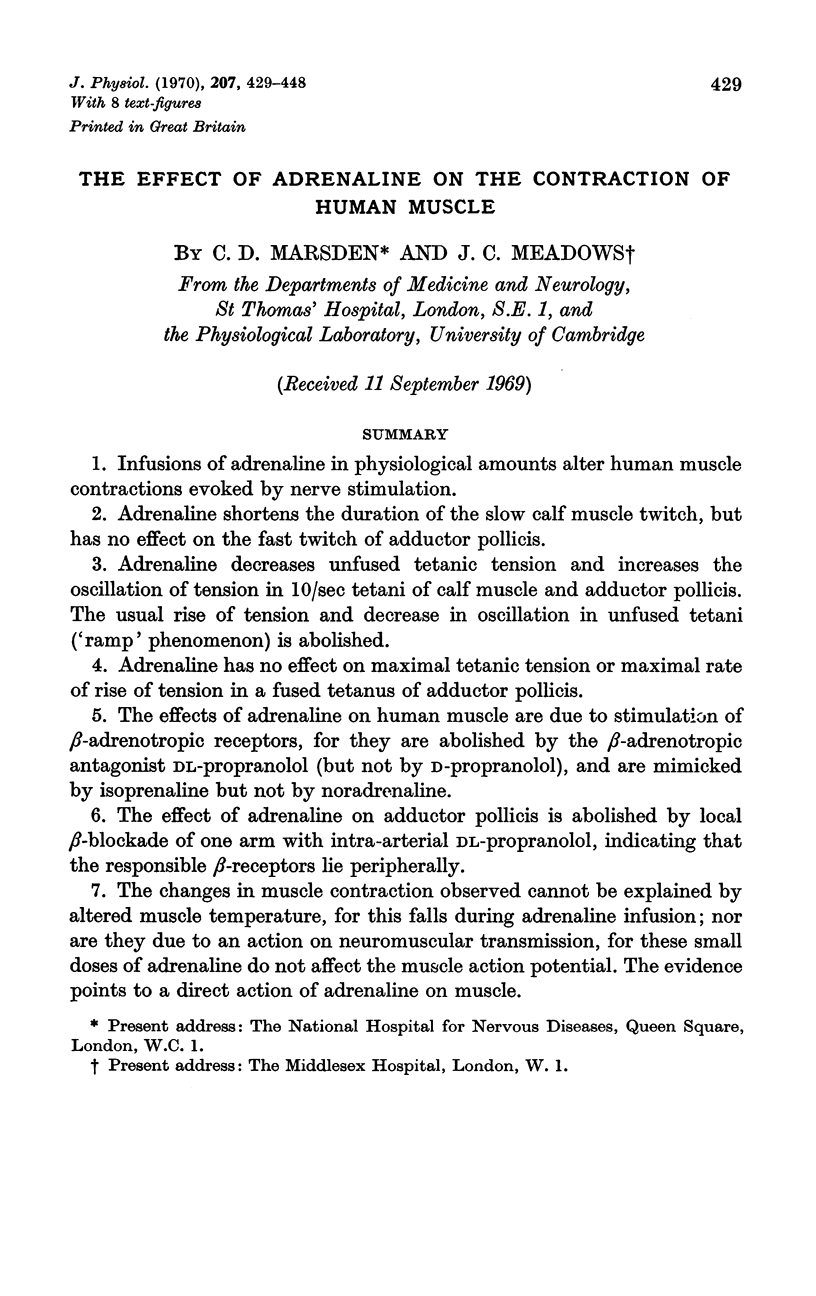
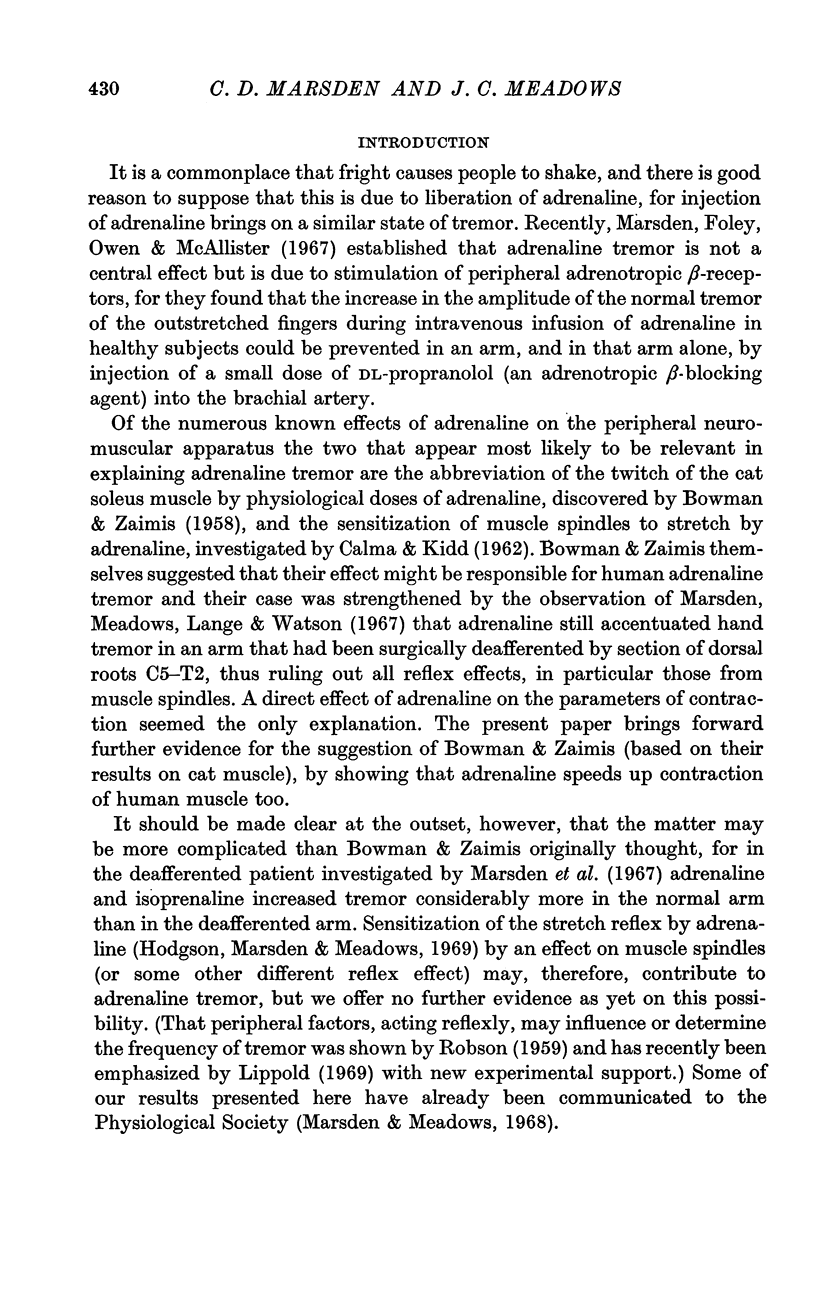
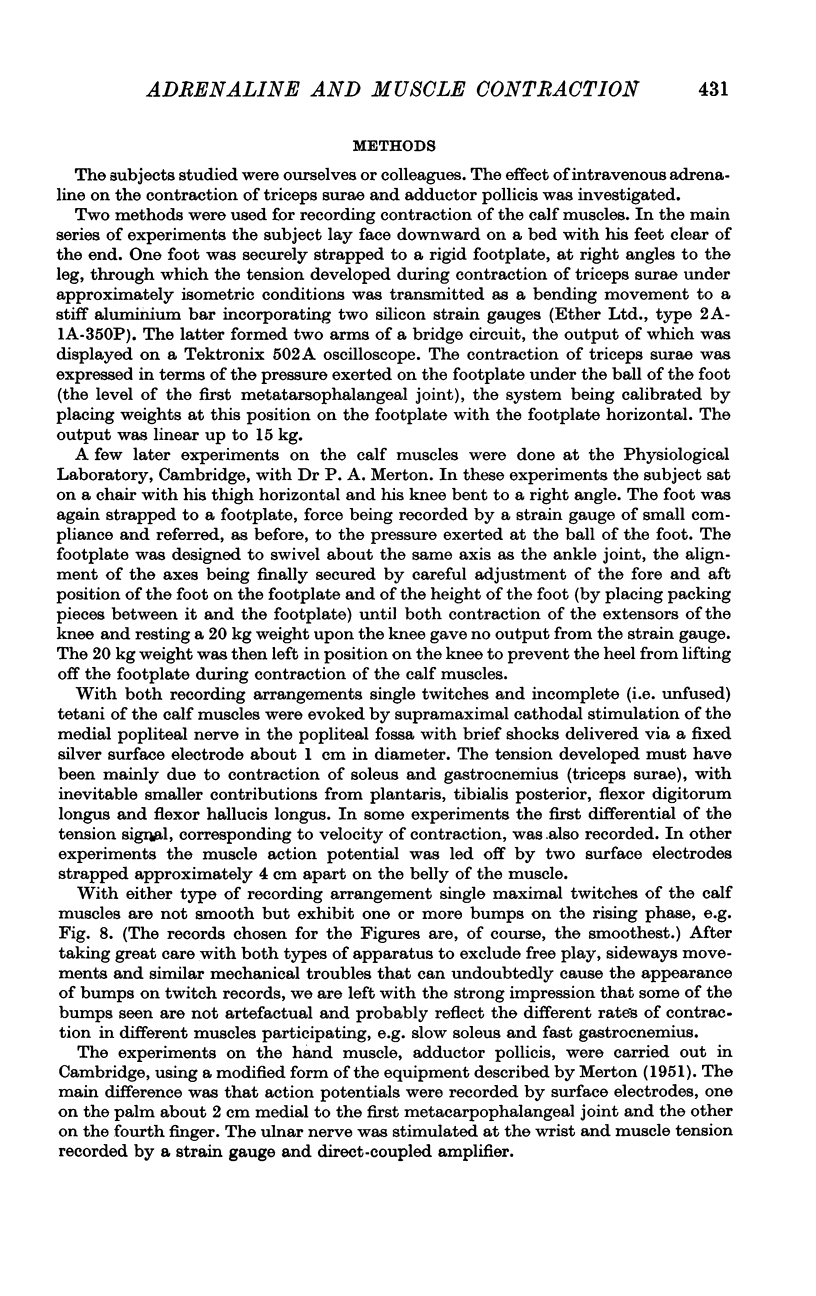
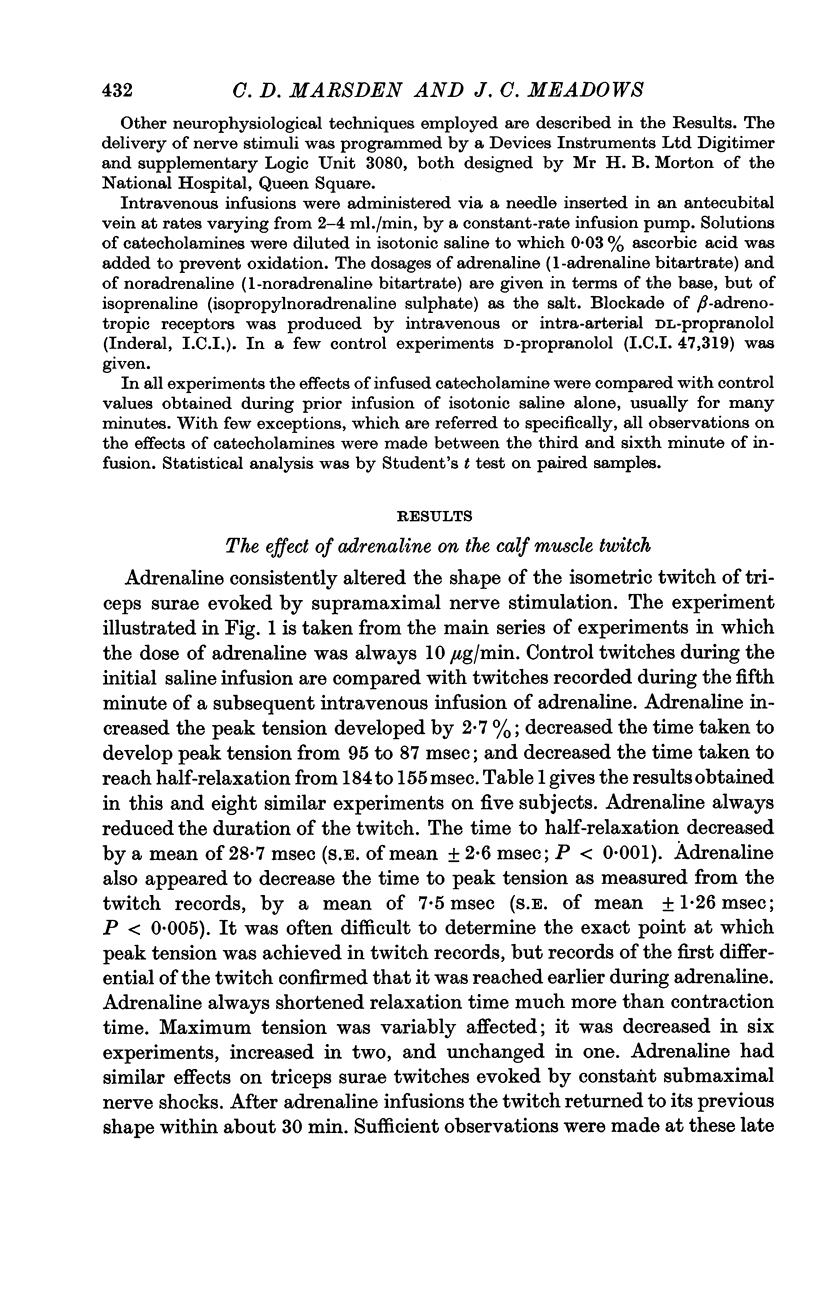
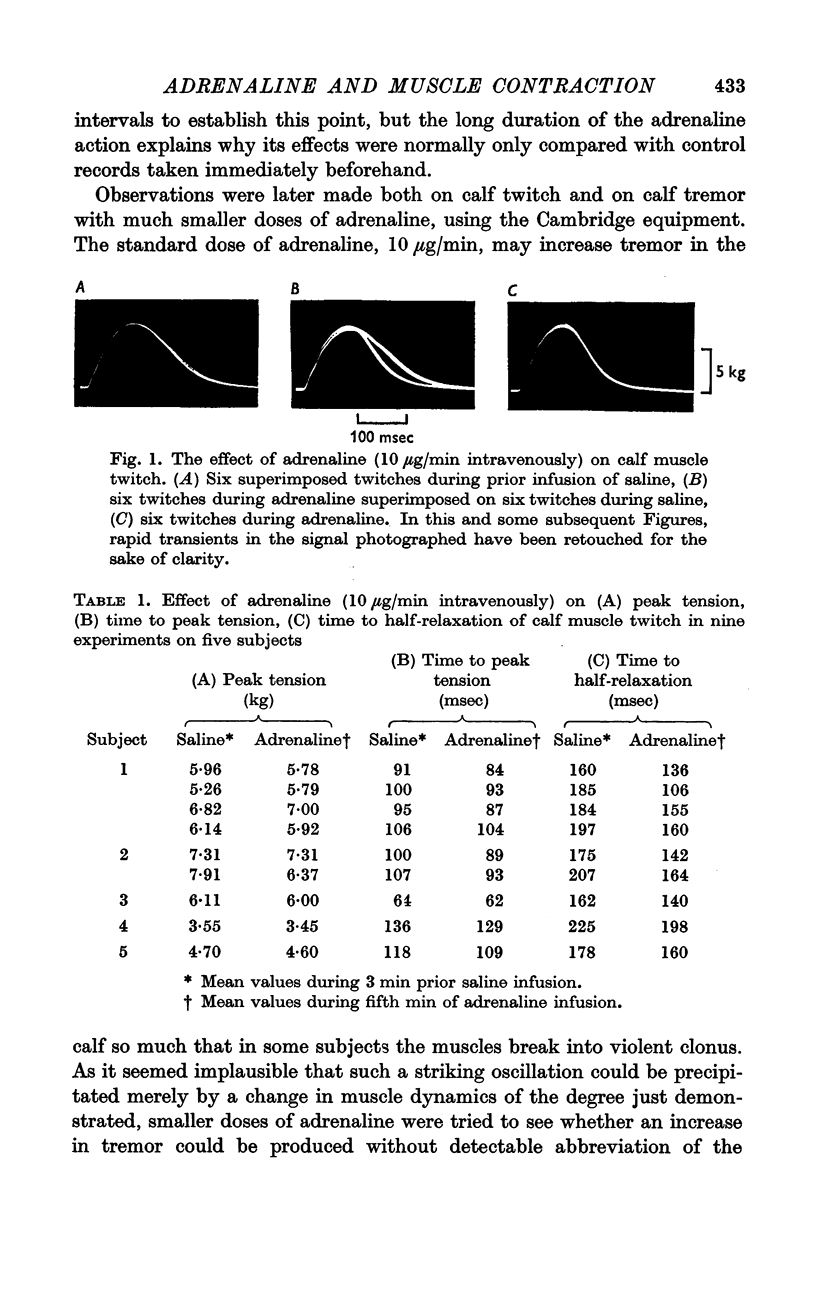

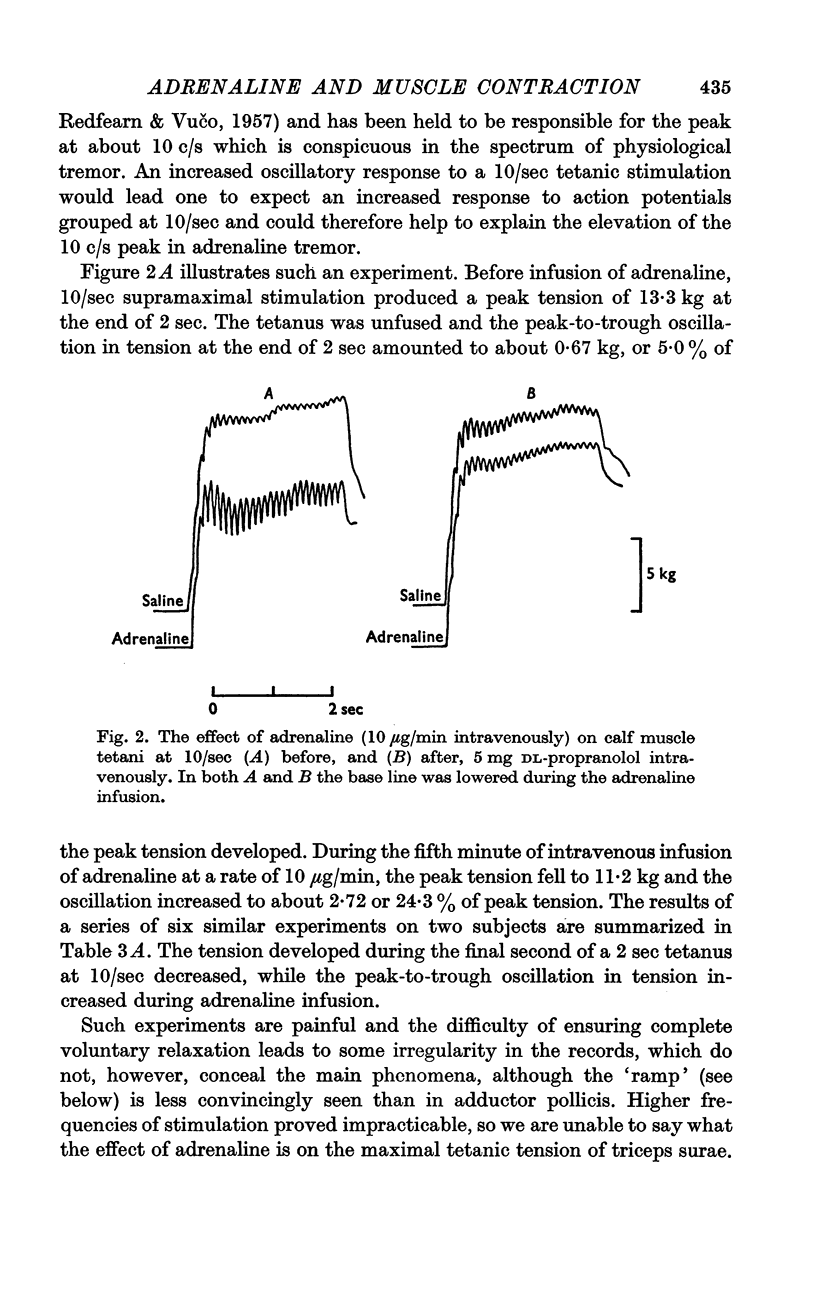
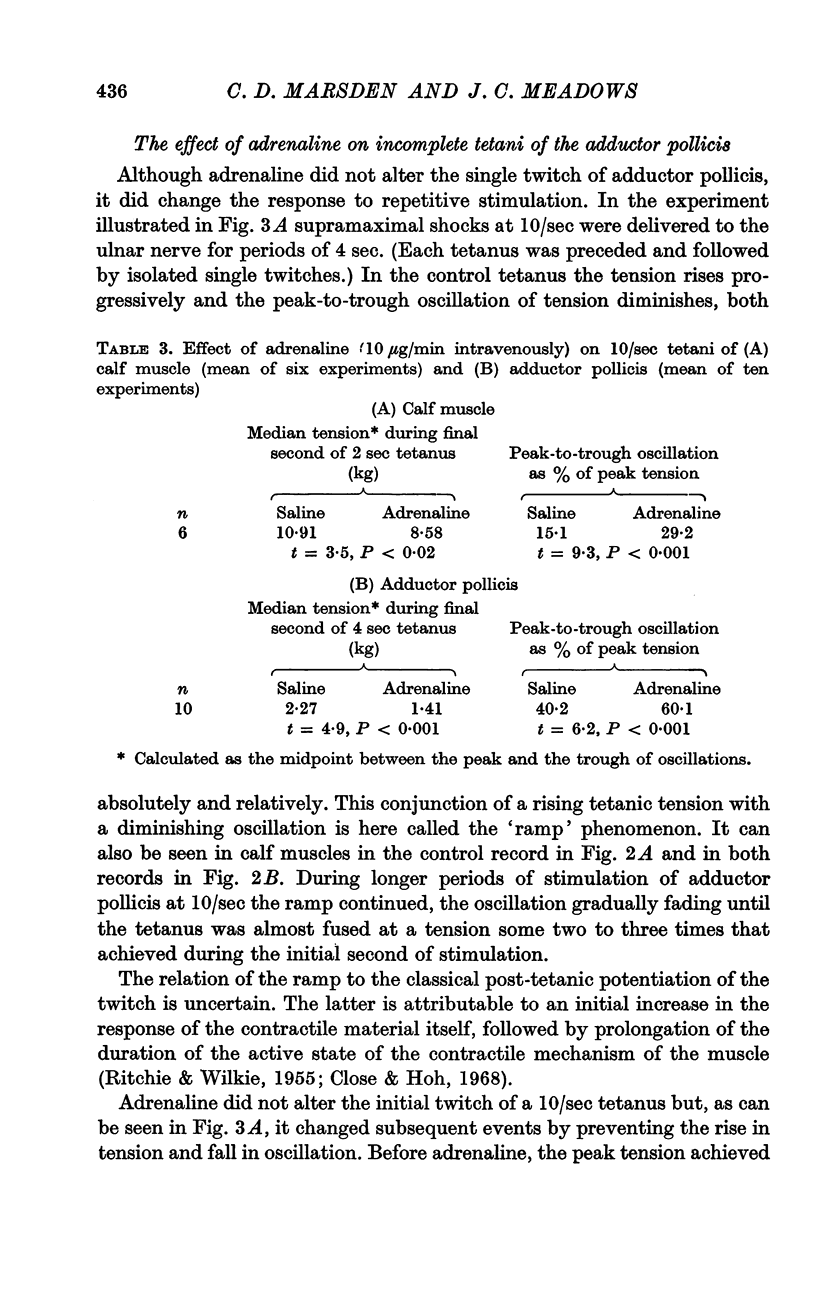
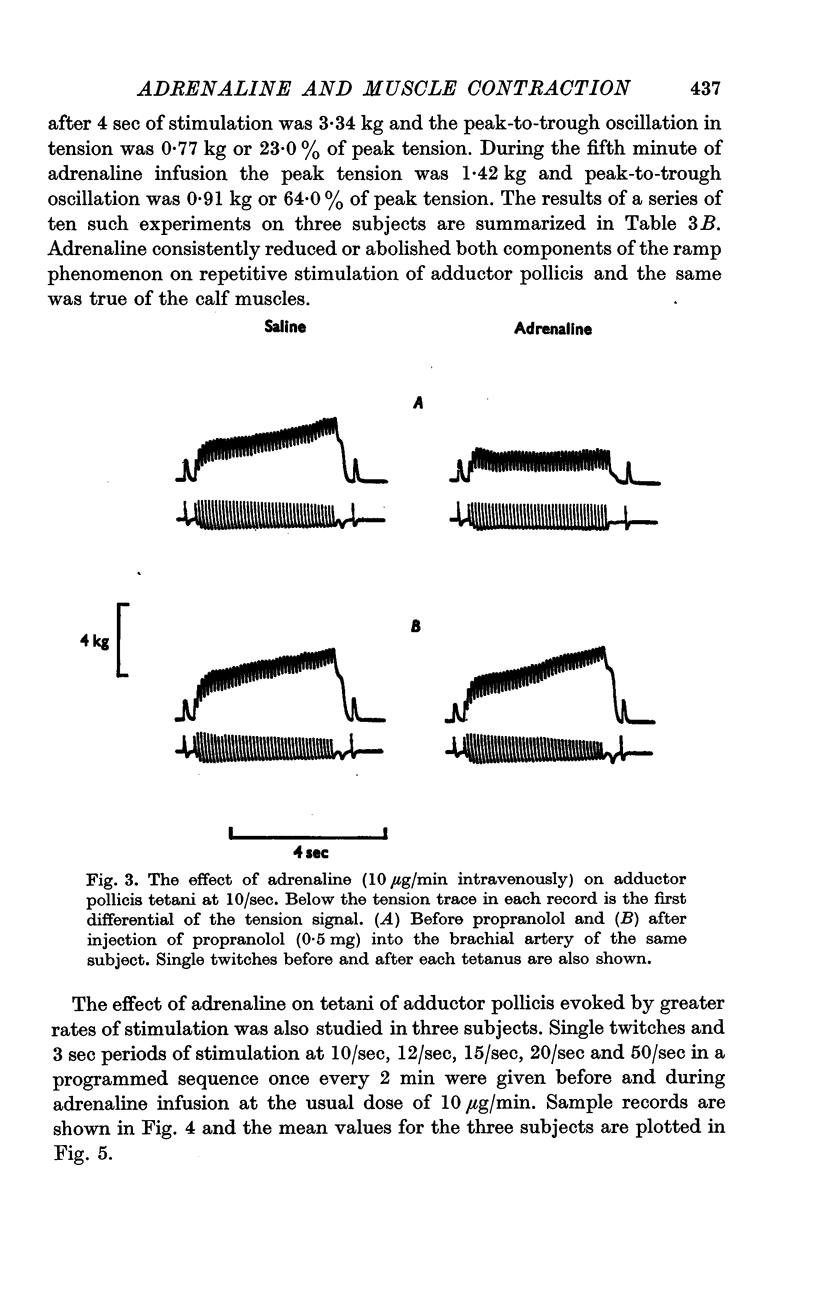

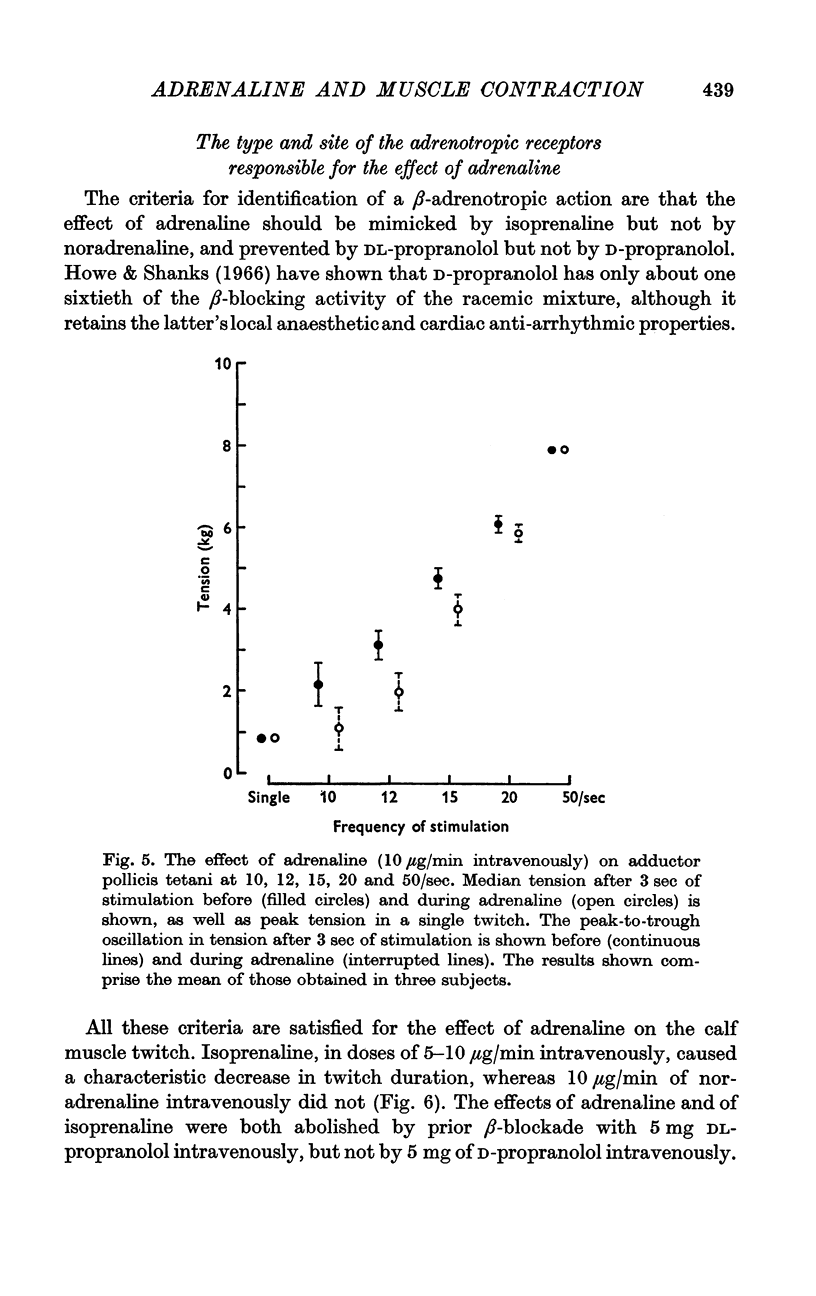
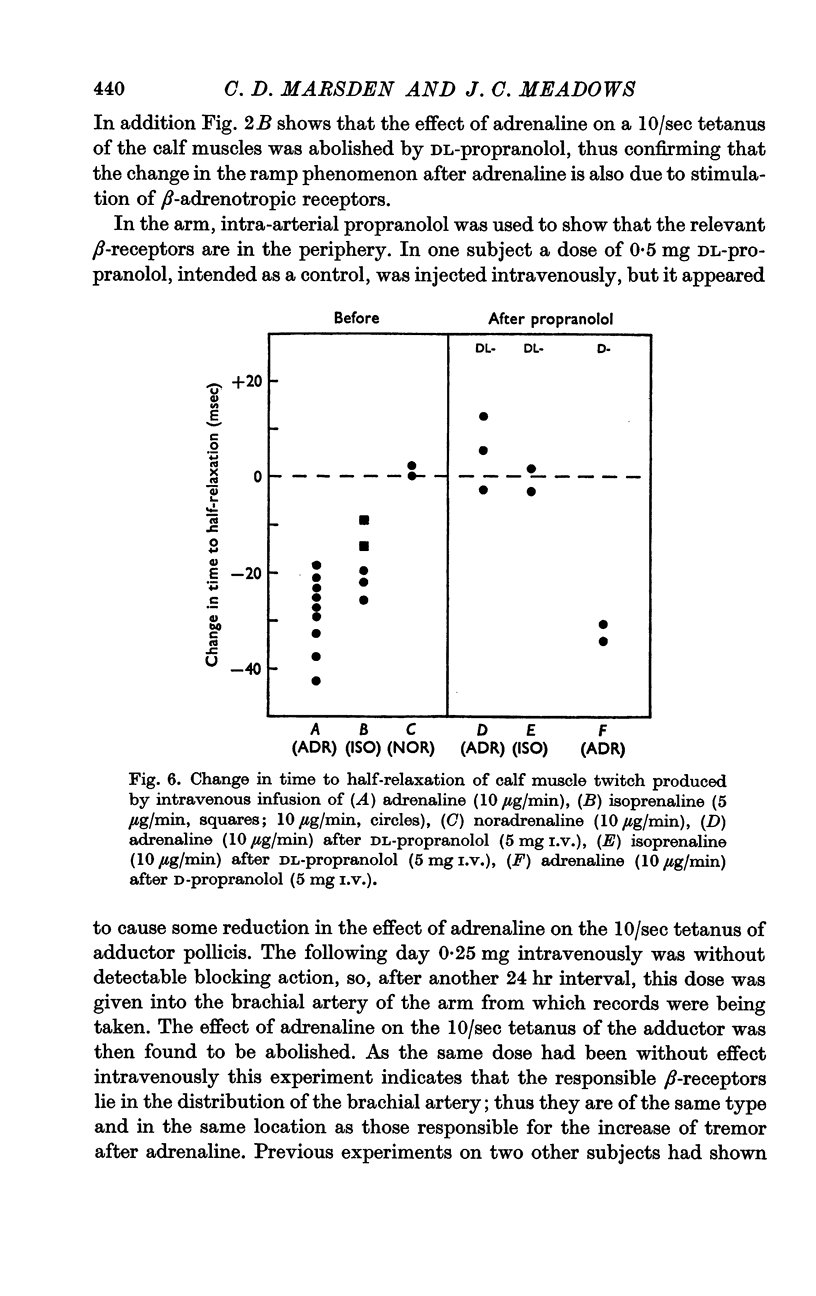
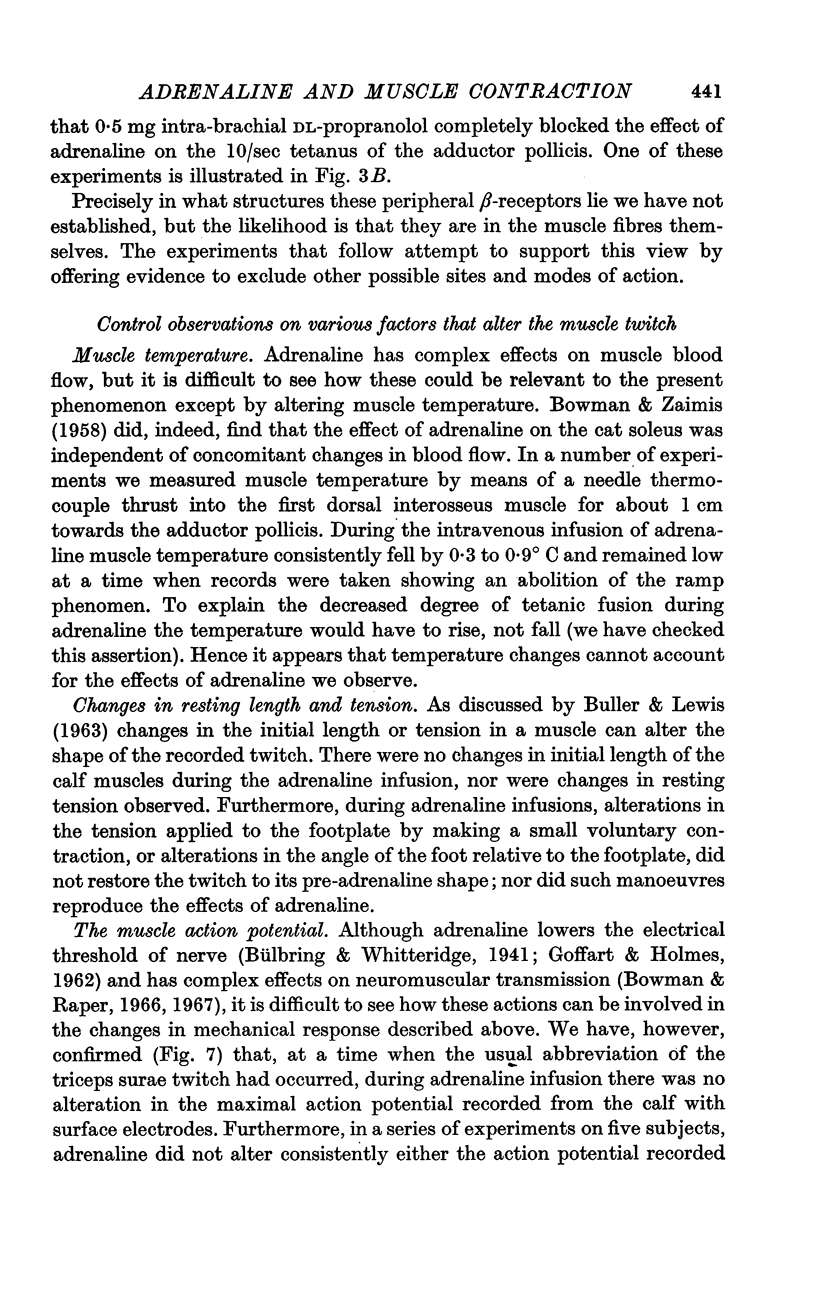
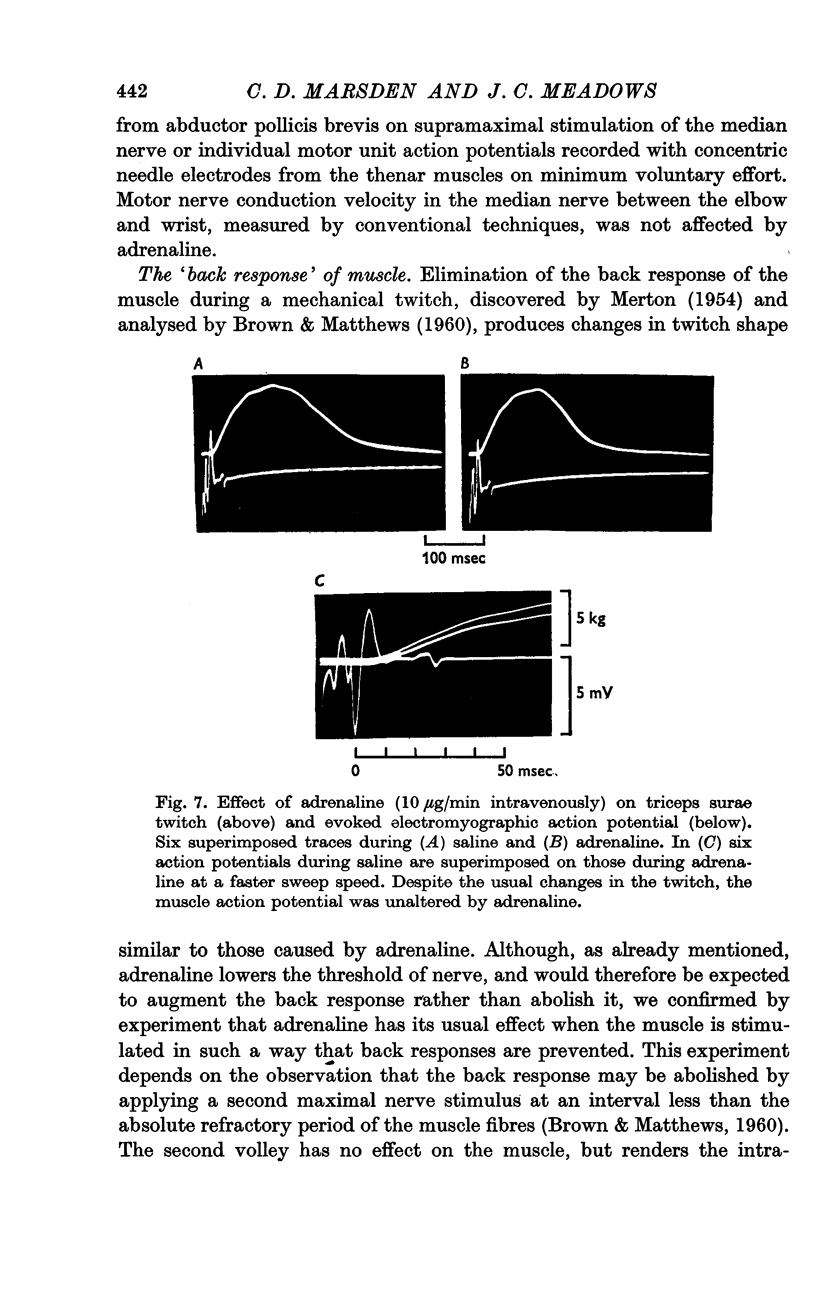
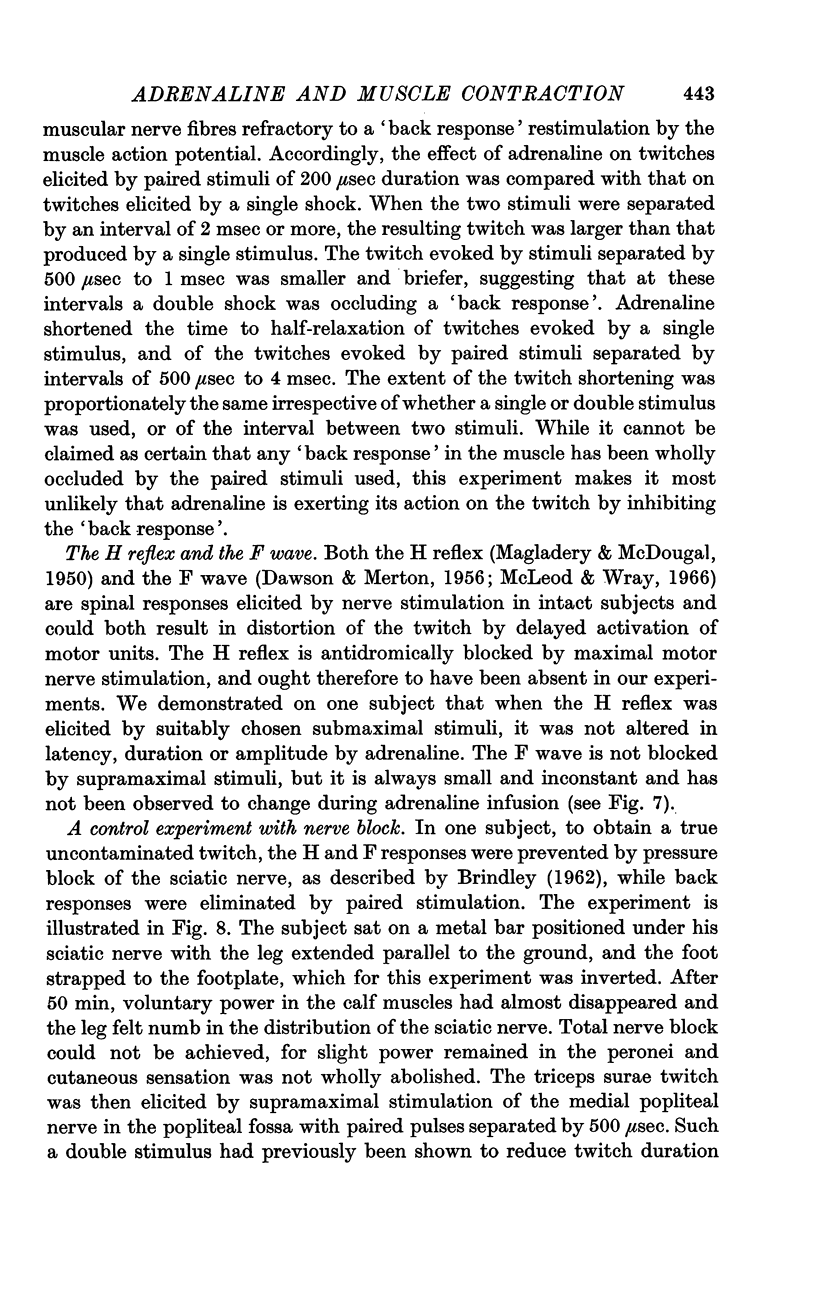
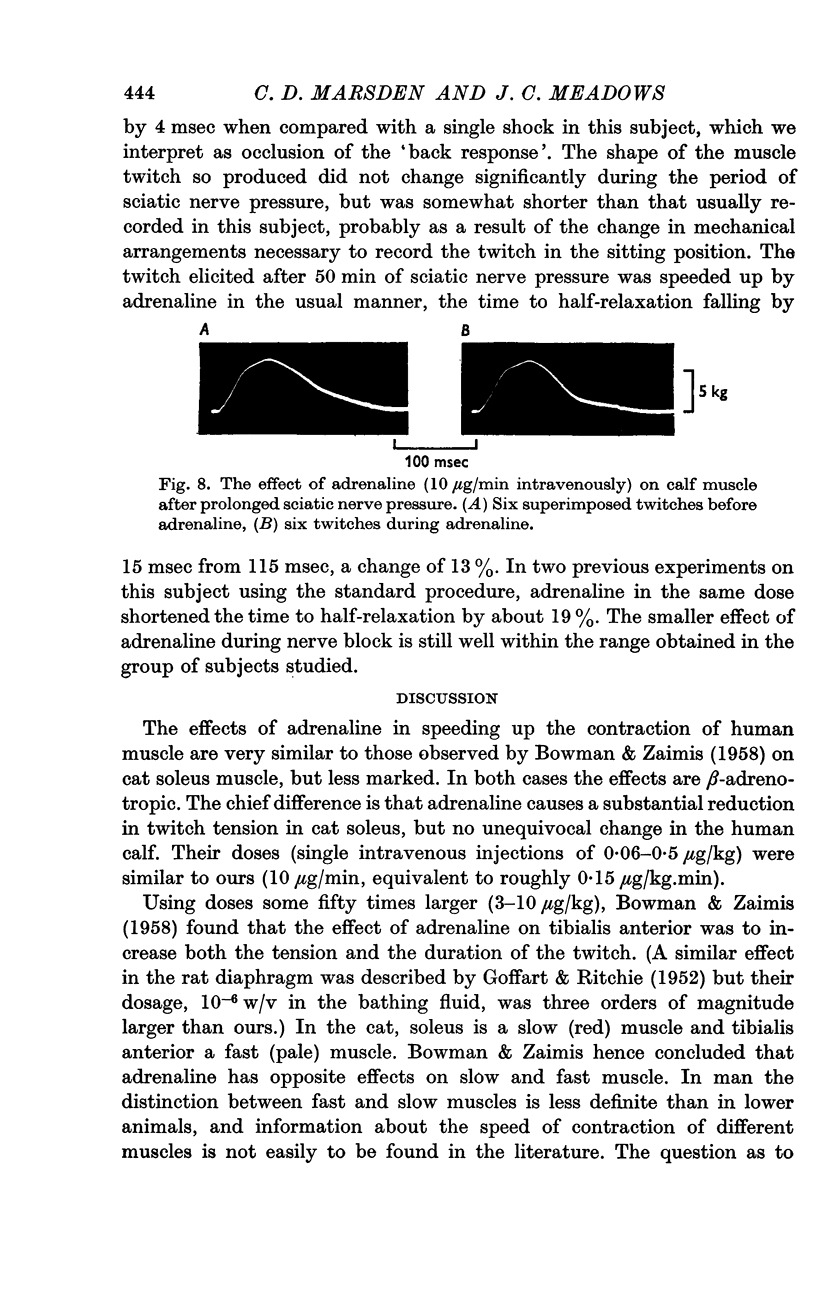
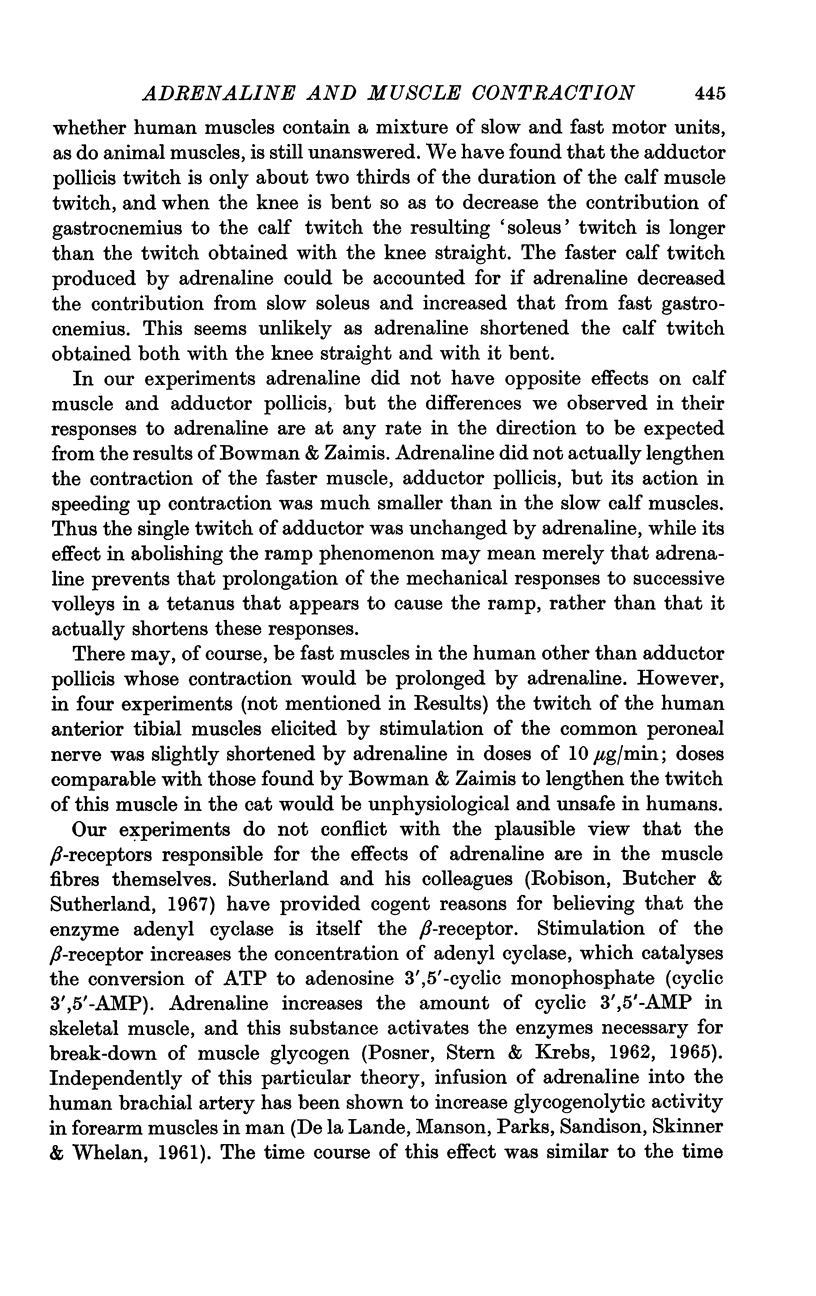
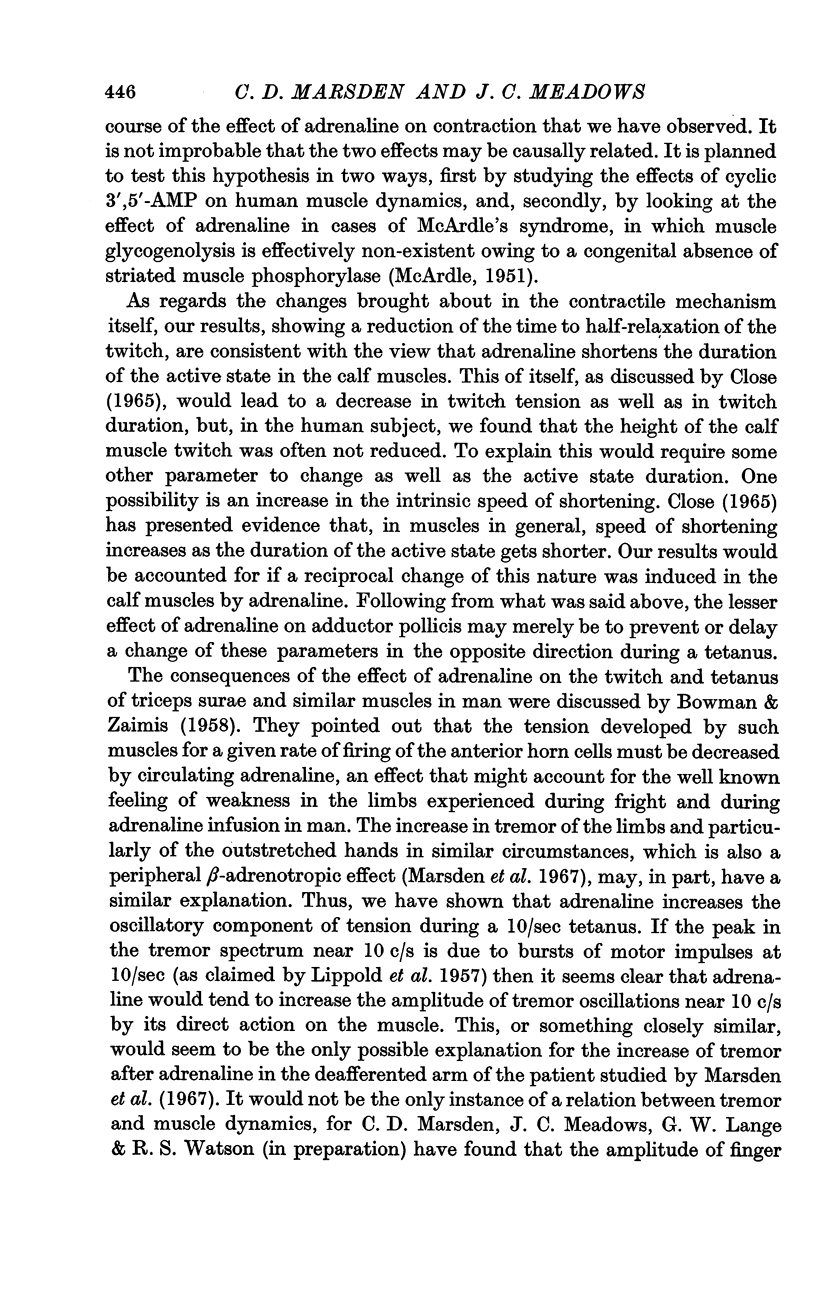
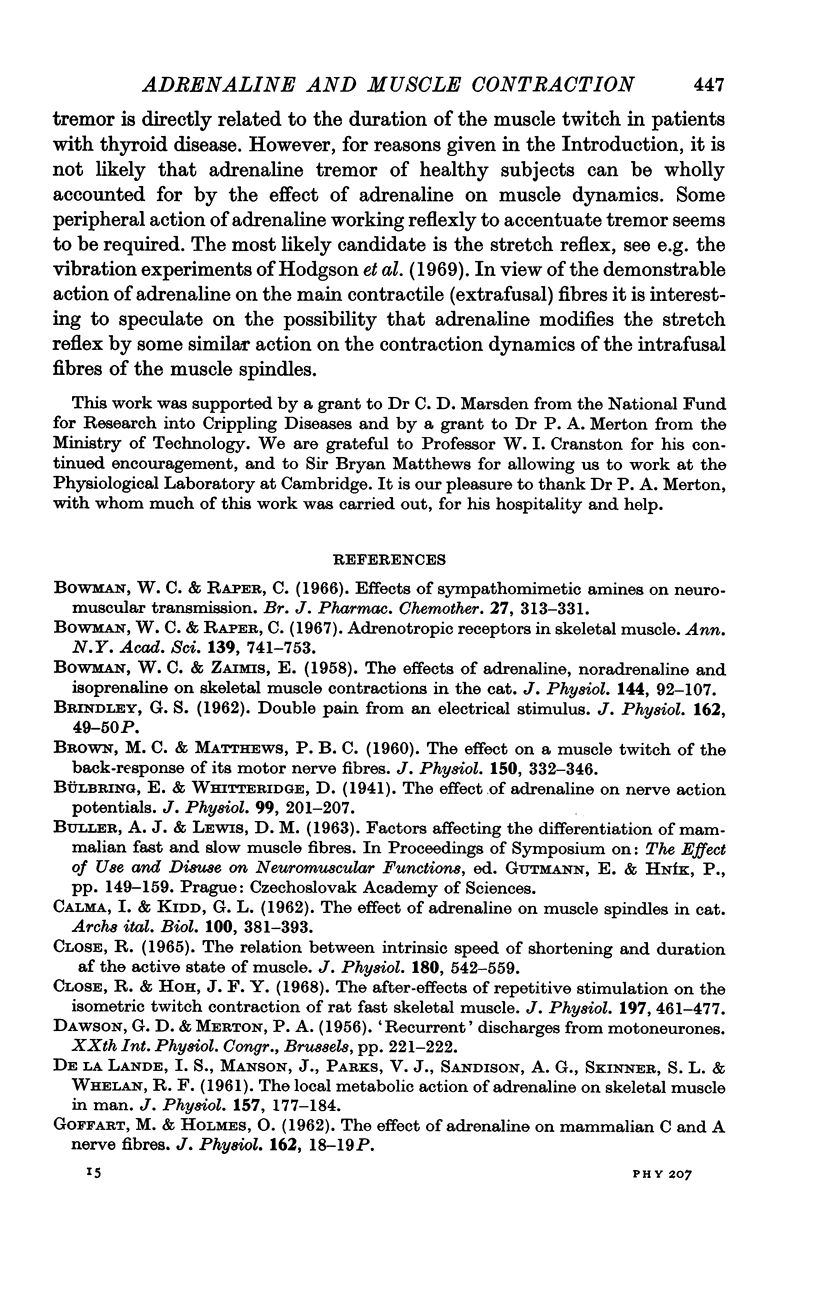
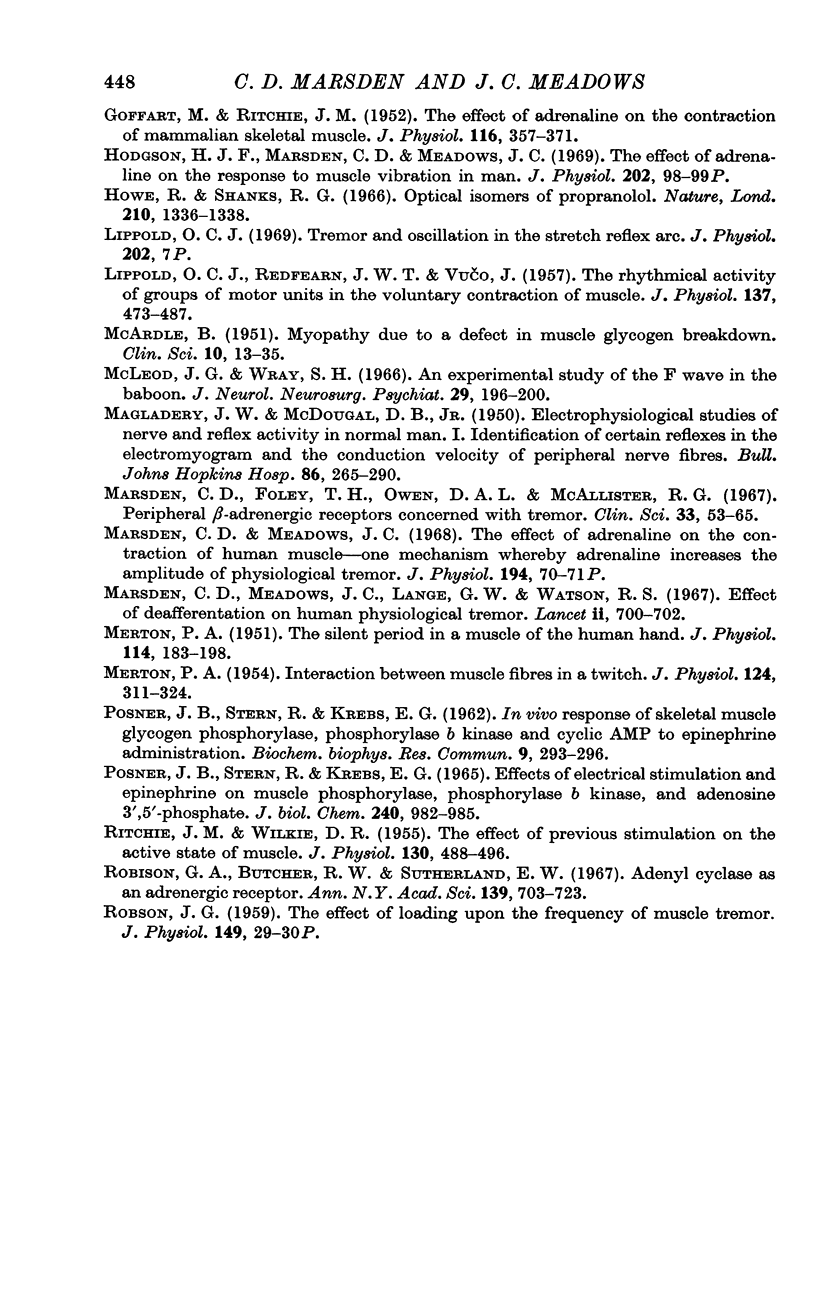
Selected References
These references are in PubMed. This may not be the complete list of references from this article.
- BOWMAN W. C., ZAIMIS E. The effects of adrenaline, noradrenaline and isoprenaline on skeletal muscle contractions in the cat. J Physiol. 1958 Nov 10;144(1):92–107. doi: 10.1113/jphysiol.1958.sp006088. [DOI] [PMC free article] [PubMed] [Google Scholar]
- BROWN M. C., MATTHEWS P. B. The effect on a muscle twitch of the back-response of its motor nerve fibres. J Physiol. 1960 Feb;150:332–346. doi: 10.1113/jphysiol.1960.sp006391. [DOI] [PMC free article] [PubMed] [Google Scholar]
- Bowman W. C., Raper C. Adrenotropic receptors in skeletal muscle. Ann N Y Acad Sci. 1967 Feb 10;139(3):741–753. doi: 10.1111/j.1749-6632.1967.tb41241.x. [DOI] [PubMed] [Google Scholar]
- Bowman W. C., Raper C. Effects of sympathomimetic amines on neuromuscular transmission. Br J Pharmacol Chemother. 1966 Aug;27(2):313–331. doi: 10.1111/j.1476-5381.1966.tb01665.x. [DOI] [PMC free article] [PubMed] [Google Scholar]
- Bülbring E., Whitteridge D. The effect of adrenaline on nerve action potentials. J Physiol. 1941 Jan 14;99(2):201–207. doi: 10.1113/jphysiol.1941.sp003893. [DOI] [PMC free article] [PubMed] [Google Scholar]
- CALMA I., KIDD G. L. The effect of adrenaline on muscle spindles in cat. Arch Ital Biol. 1962;100:381–393. [PubMed] [Google Scholar]
- Close R., Hoh J. F. The after-effects of repetitive stimulation on the isometric twitch contraction of rat fast skeletal muscle. J Physiol. 1968 Jul;197(2):461–477. doi: 10.1113/jphysiol.1968.sp008570. [DOI] [PMC free article] [PubMed] [Google Scholar]
- Close R. The relation between intrinsic speed of shortening and duration of the active state of muscle. J Physiol. 1965 Oct;180(3):542–559. doi: 10.1113/jphysiol.1965.sp007716. [DOI] [PMC free article] [PubMed] [Google Scholar]
- DE LA LANDE I. S., MANSON J., PARKS V. J., SANDISON A. G., SKINNER S. L., WHELAN R. F. The local metabolic action of adrenaline on skeletal muscle in man. J Physiol. 1961 Jun;157:177–184. doi: 10.1113/jphysiol.1961.sp006713. [DOI] [PMC free article] [PubMed] [Google Scholar]
- GOFFART M., RITCHIE J. M. The effect of adrenaline on the contraction of mammalian skeletal muscle. J Physiol. 1952 Mar;116(3):357–371. doi: 10.1113/jphysiol.1952.sp004710. [DOI] [PMC free article] [PubMed] [Google Scholar]
- Hodgson H. J., Marsden C. D., Meadows J. C. The effect of adrenaline on the response to muscle vibration in man. J Physiol. 1969 Jun;202(2):98P–99P. [PubMed] [Google Scholar]
- Howe R., Shanks R. G. Optical isomers of propranolol. Nature. 1966 Jun 25;210(5043):1336–1338. doi: 10.1038/2101336a0. [DOI] [PubMed] [Google Scholar]
- LIPPOLD O. C., REDFEARN J. W., VUCO J. The rhythmical activity of groups of motor units in the voluntary contraction of muscle. J Physiol. 1957 Aug 6;137(3):473–487. doi: 10.1113/jphysiol.1957.sp005828. [DOI] [PMC free article] [PubMed] [Google Scholar]
- MAGLADERY J. W., McDOUGAL D. B., Jr Electrophysiological studies of nerve and reflex activity in normal man. I. Identification of certain reflexes in the electromyogram and the conduction velocity of peripheral nerve fibers. Bull Johns Hopkins Hosp. 1950 May;86(5):265–290. [PubMed] [Google Scholar]
- MERTON P. A. Interaction between muscle fibres in a twitch. J Physiol. 1954 May 28;124(2):311–324. doi: 10.1113/jphysiol.1954.sp005110. [DOI] [PMC free article] [PubMed] [Google Scholar]
- MERTON P. A. The silent period in a muscle of the human hand. J Physiol. 1951 Jun;114(1-2):183–198. doi: 10.1113/jphysiol.1951.sp004610. [DOI] [PMC free article] [PubMed] [Google Scholar]
- Marsden C. D., Foley T. H., Owen D. A., McAllister R. G. Peripheral beta-adrenergic receptors concerned with tremor. Clin Sci. 1967 Aug;33(1):53–65. [PubMed] [Google Scholar]
- Marsden C. D., Meadows J. C., Lange G. W., Watson R. S. Effect of deafferentation on human physiological tremor. Lancet. 1967 Sep 30;2(7518):700–702. doi: 10.1016/s0140-6736(67)90977-4. [DOI] [PubMed] [Google Scholar]
- McLeod J. G., Wray S. H. An experimental study of the F wave in the baboon. J Neurol Neurosurg Psychiatry. 1966 Jun;29(3):196–200. doi: 10.1136/jnnp.29.3.196. [DOI] [PMC free article] [PubMed] [Google Scholar]
- POSNER J. B., STERN R., KREBS E. G. EFFECTS OF ELECTRICAL STIMULATION AND EPINEPHRINE ON MUSCLE PHOSPHORYLASE, PHOSPHORYLASE B KINASE, AND ADENOSINE 3',5'-PHOSPHATE. J Biol Chem. 1965 Mar;240:982–985. [PubMed] [Google Scholar]
- POSNER J. B., STERN R., KREBS E. G. In vivo response of skeletal muscle glycogen phosphorylase, phosphorylase b kinase and cyclic AMP to epinephrine administration. Biochem Biophys Res Commun. 1962 Oct 31;9:293–296. doi: 10.1016/0006-291x(62)90042-6. [DOI] [PubMed] [Google Scholar]
- RITCHIE J. M., WILKIE D. R. The effect of previous stimulation on the active state of muscle. J Physiol. 1955 Nov 28;130(2):488–496. doi: 10.1113/jphysiol.1955.sp005422. [DOI] [PMC free article] [PubMed] [Google Scholar]
- Robison G. A., Butcher R. W., Sutherland E. W. Adenyl cyclase as an adrenergic receptor. Ann N Y Acad Sci. 1967 Feb 10;139(3):703–723. doi: 10.1111/j.1749-6632.1967.tb41239.x. [DOI] [PubMed] [Google Scholar]


